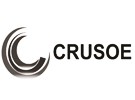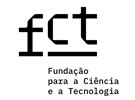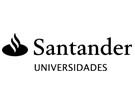



Publication in the Diário da República: Despacho nº 14433/2024 - 05/12/2024
5 ECTS; 1º Ano, 2º Semestre, 30,0 T + 30,0 TP + 4,50 OT , Cód. 912308.
Lecturer
- Isabel Maria Duarte Pinheiro Nogueira (1)(2)
(1) Docente Responsável
(2) Docente que lecciona
Prerequisites
Not applicable.
Objectives
Students should acquire knowledge about the various materials used in engineering,
in order to understand the properties of materials and relate them to their applications in engineering.
Students should acquire and develop skills in selecting materials for industrial and technological applications in order to prevent degradation phenomena in equipment such as corrosion, mechanical fatigue, wear and friction.
Know how to characterise different materials in structural and microstructural terms and group them into different classes. Also know and understand the processes of solidification and
diffusion. Above all, know how to interconnect microstructure/properties, materials/application and
service/degradation.
Program
1. Introduction to Materials
1.1. Materials and humankind: past, present and future
1.2. Main classes of materials: metals and metal alloys, ceramics (and glass), polymers,
semiconductors, composites
1.3. General properties and applications
2. Atomic structure, atomic bonds and properties of materials
2.1. Chemical bonding: ionic, covalent, metallic, secondary and mixed bonds
2.2. Influence of the type of chemical bonds on the structure and properties of materials
2.3. Atomic dimensions and interatomic distances
2.4. Atomic coordination
3. Crystalline structures and amorphism
3.1. Space lattice and unit cells
3.2. Crystallographic systems and Bravais lattices
3.3. Interatomic distances and lattice parameters
3.4. Single-crystal and polycrystalline materials
3.5. Characterisation of the main crystalline structures of metals
3.6. Atomic positions in cubic unit cells
3.7. Directions in cubic unit cells
3.8. Miller indices of crystallographic planes in cubic unit cells
3.9. Comparison between CFC, CCC and HC crystalline structures
3.10. Calculation of volume, planar and linear density in unit cells
3.11. Determination of crystalline structures
3.12. Polymorphism/allotropy
4. Solidification, crystalline defects
4.1. Solidification in metals
4.2. Homogeneous nucleation and heterogeneous nucleation
4.3. Dendrite formation and crystal growth
4.4. Grain and grain size measurement
4.5. Solidification of single crystals
4.6. Metallic solid solutions.
4.7. Hume-Rothery laws.
4.8. Crystalline defects.
4.9. Point defects.
4.10. Displacements.
4.11. Twins.
5. Diffusion in solids
5.1. Movement of atoms in solids
5.2. Diffusion mechanisms: substitution or vacancy diffusion and interstitial diffusion
5.3. Diffusion in steady state and non-steady state
5.4. Industrial applications.
5.5. Effect of temperature on diffusion in solids
6. Mechanical properties of materials
6.1. Processing of metals and alloys
6.2. Brief review of elastic and plastic behaviour
6.3. Hardness assessment
6.4. Hardening of metals
6.5. Recovery and recrystallisation of plastically deformed metals
6.6. From toughness to fracture of metals
6.7. Fatigue, creep and stress rupture of metals
6.7. Comparison of typical mechanical properties between various types of materials
7. Phase diagrams of engineering metal alloys
7.1. Notion of phase and component
7.2. Phase rule or Gibbs rule
7.3. Lever rule
7.4. Analysis of equilibrium diagrams of binary systems
7.5. Solidification of alloys under non-equilibrium conditions
7.6. Selection of metallic materials for engineering applications
Evaluation Methodology
- Continuous assessment period:
Two written tests taken during the teaching period. Passing requires a minimum final mark
of 10, resulting from the arithmetic mean of the marks obtained in each written test.
- Normal examination period and resit examination period, as well as Special Examination Period:
Written test, passing requires a minimum mark of 10.
Bibliography
- Hummel, . (2006). Understanding Materials Science. New York: Springer-Verlag
- Mangonon, . (1999). The Principles of Materials Selection for Engineering Design. New Jersey: Prentice-Hall Inc.
- Askeland, D. (1992). The Science and Engineering of Materials. London: Chapman & Hall
- Callister, W. (2010). Materials Science and Engineering: an Introduction.. New York: John Wiley & Sons
- Shackelford, . (2004). Introduction to Materials Science for Engineers. New Jersey: Prentice-Hall
- Smith, W. (1998). Princípios de Ciência e Engenharia dos Materiais. Lisboa: Mc. Graw-Hill
- Vários, V. (0). Tabela Periódica. Acedido em 9 de março de 2019 em http://imagens.tabelaperiodica.org/
- Vários, V. (0). Artigos da Revista Ciência & Tecnologia dos Materiais . Acedido em 9 de março de 2019 em http://www.spmateriais.pt/
Teaching Method
Lectures accompanied by practical classes for solving exercises on the subject taught.
Software used in class
Not applicable.

















